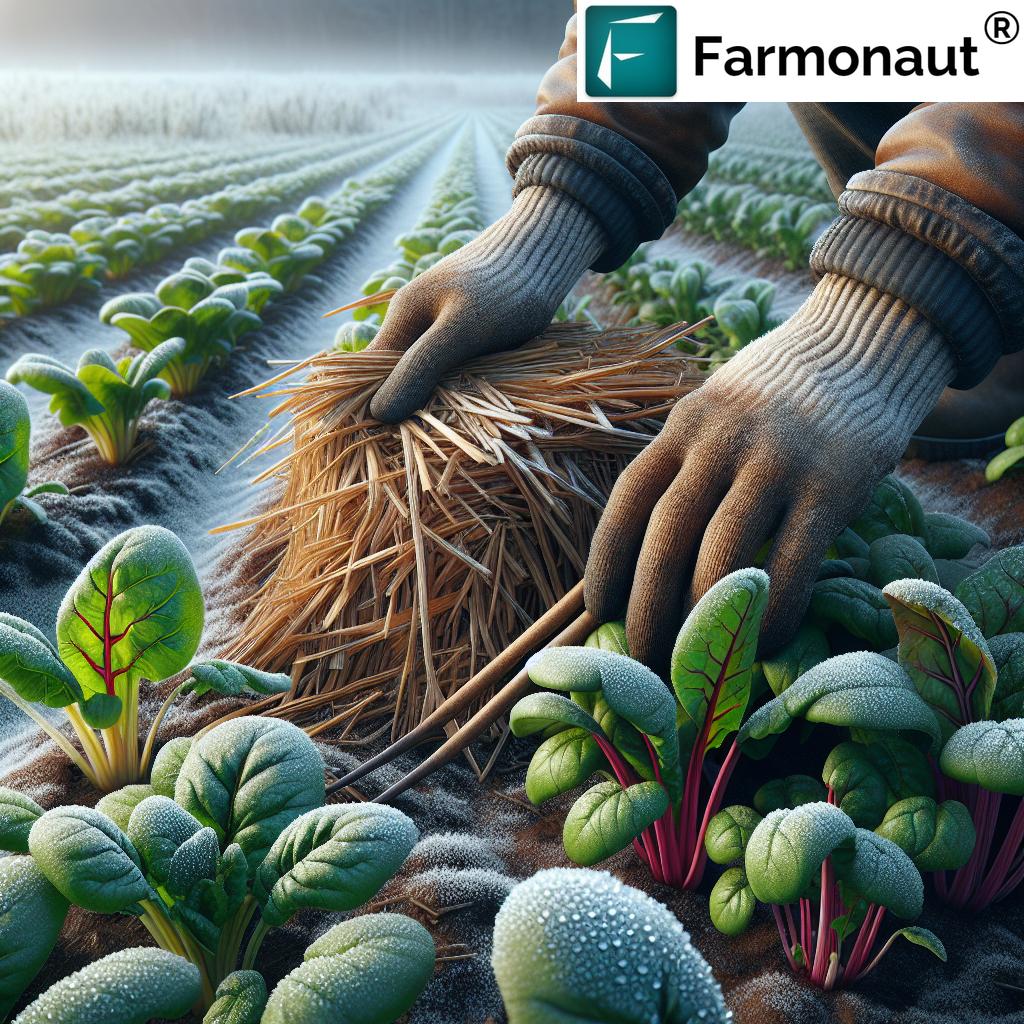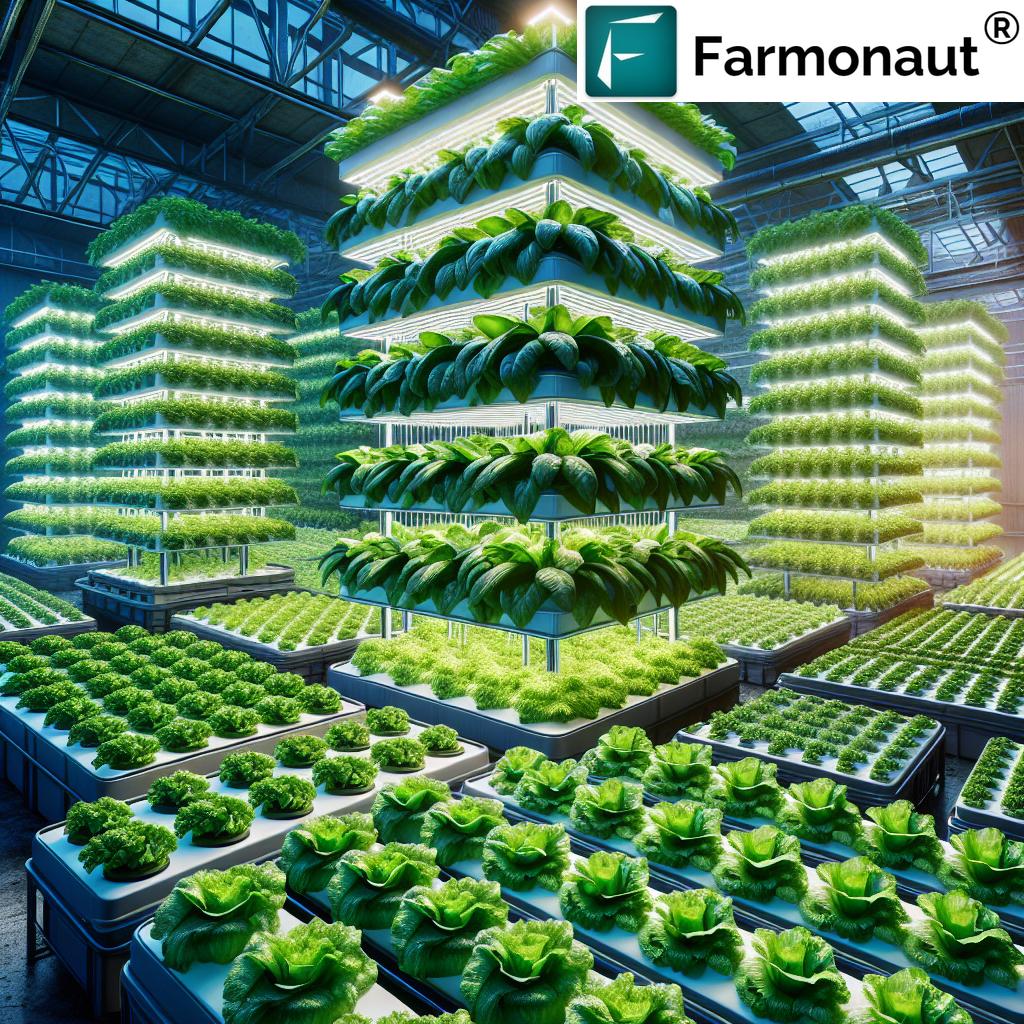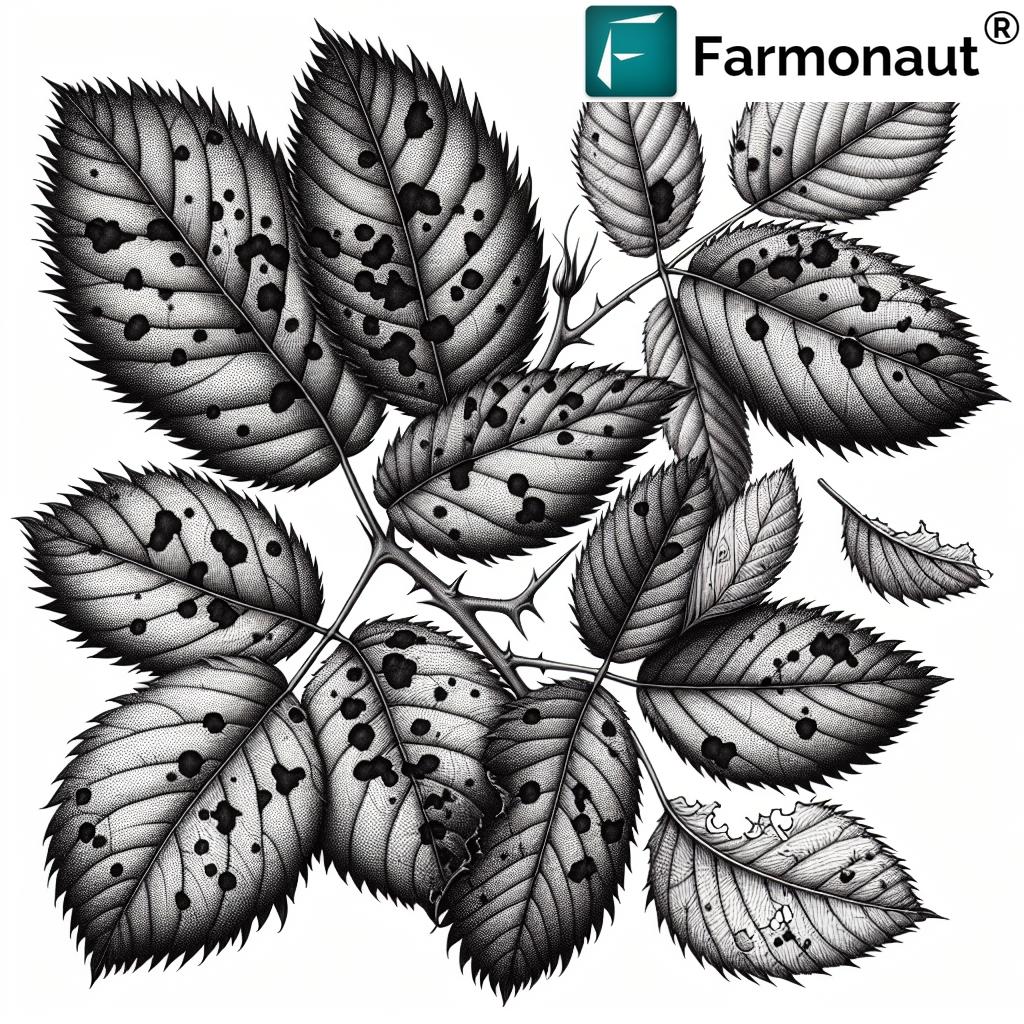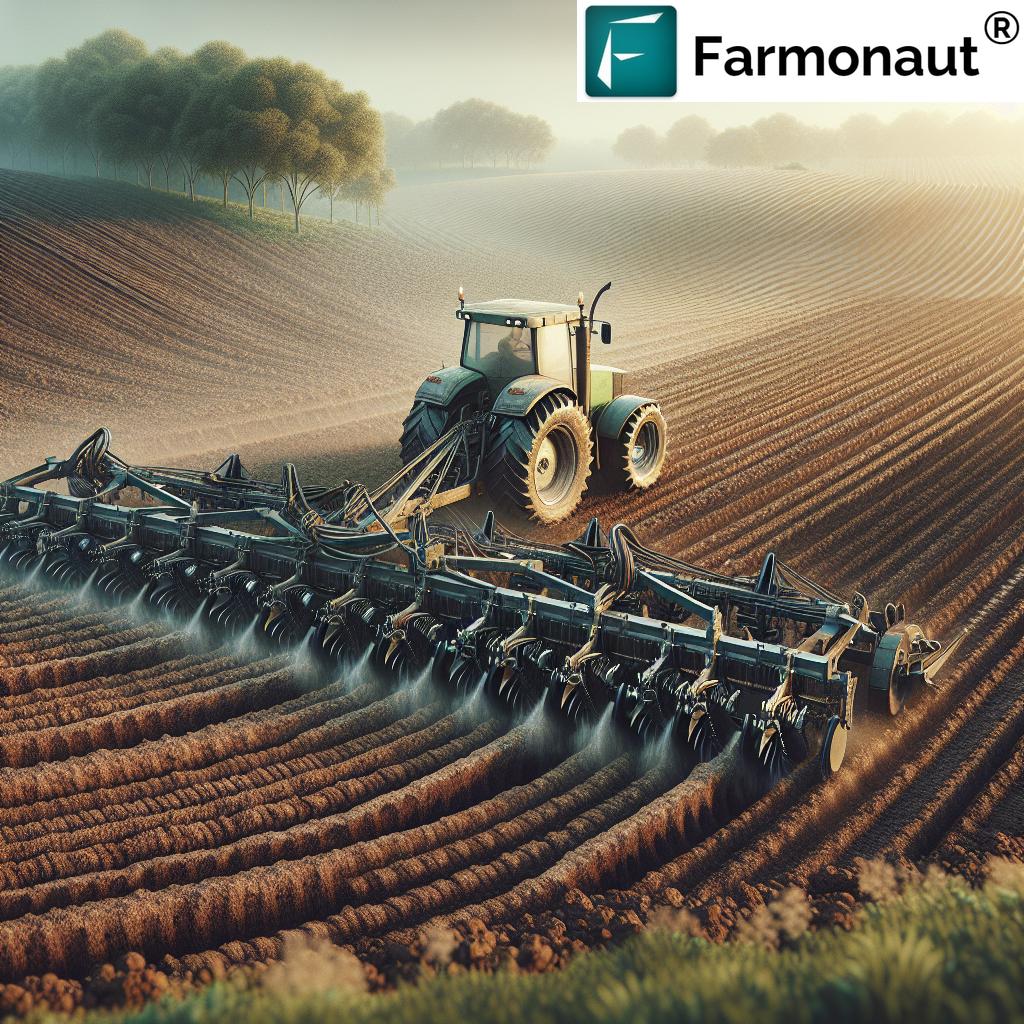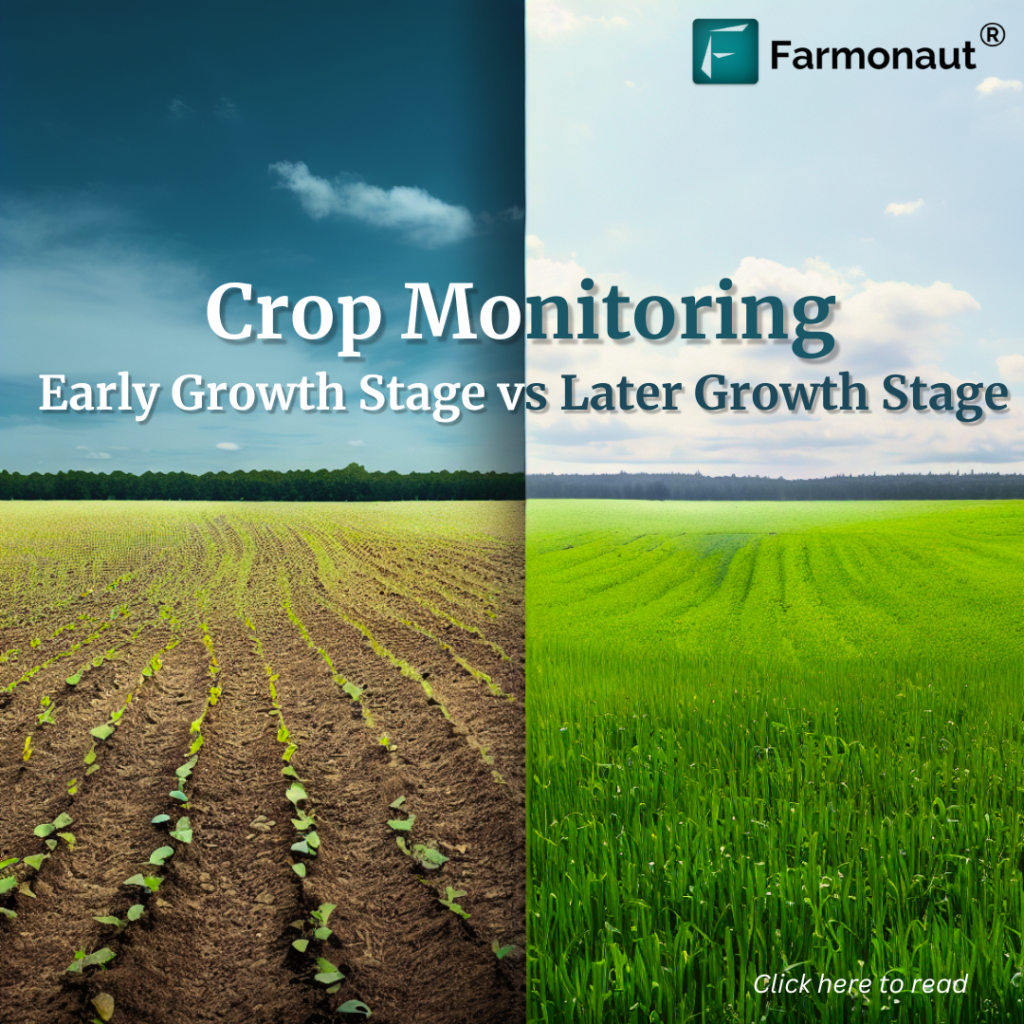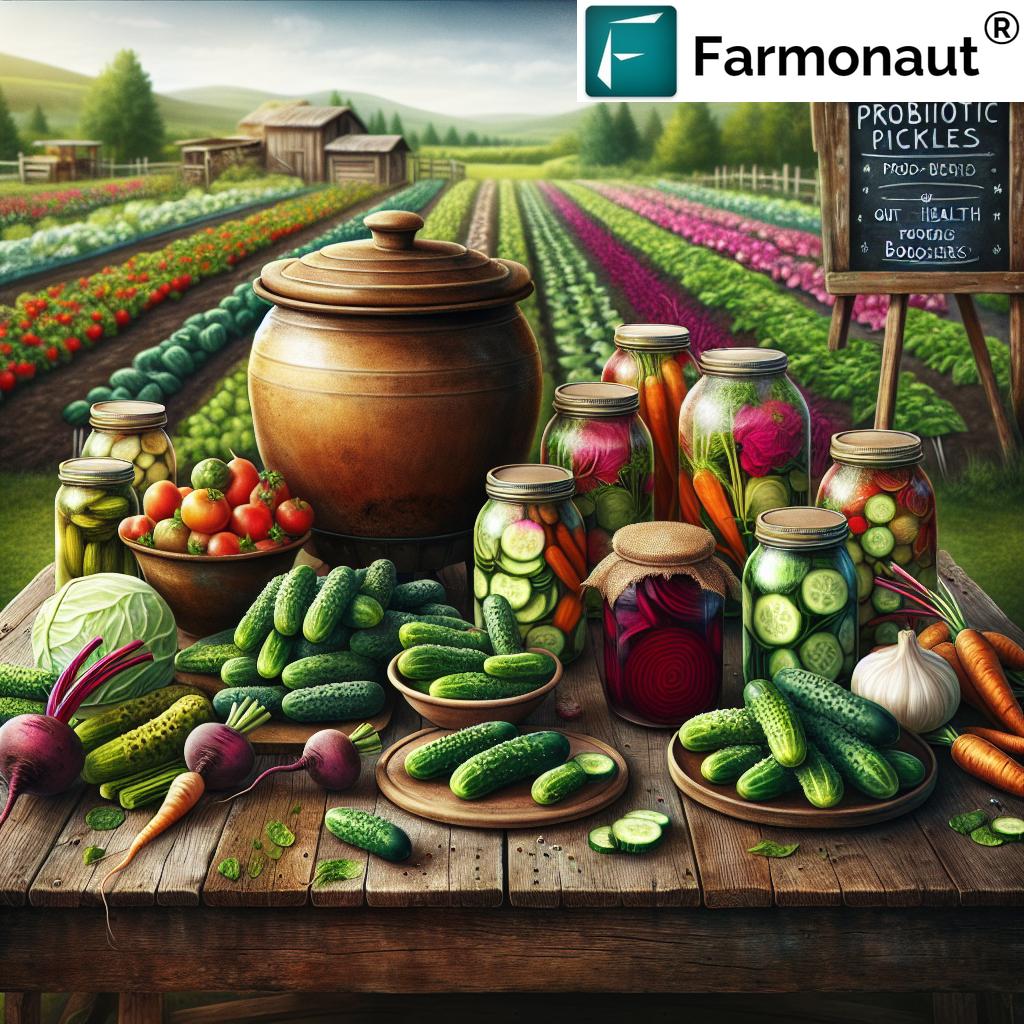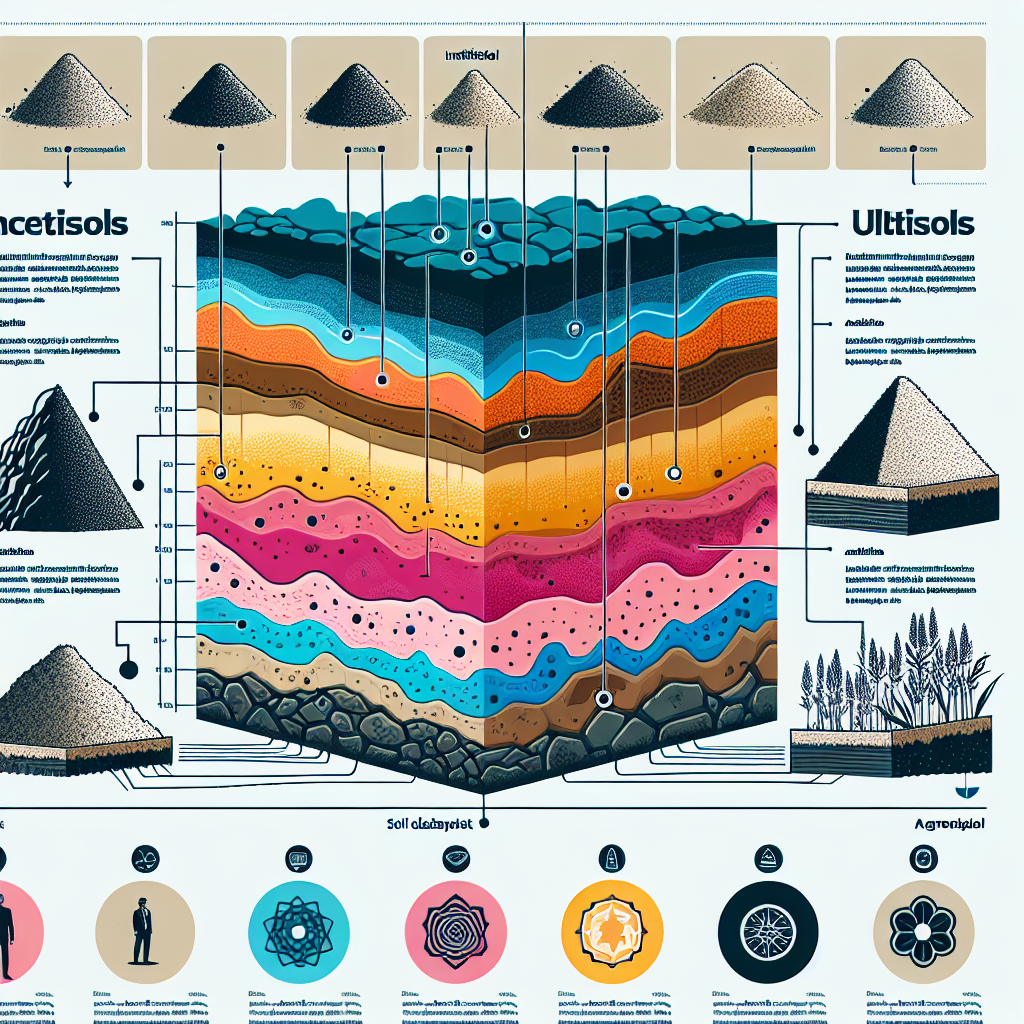How to Protect Plants from Frost: 10 Effective Ways
Meta description: Protecting plants from frost requires timely methods like mulching, row covers, and weather monitoring to reduce cold damage and boost farm harvests.
“Up to 90% of crop loss can be prevented by using frost-resistant plant varieties and timely mulching techniques.”
- Summary
- Understanding Frost Damage
- Site Selection and Management
- Plant Selection and Timing
- Mulching for Cold Weather
- Row Covers and Tunnels
- Irrigation Techniques for Frost Protection
- Windbreaks and Shelterbelts
- Passive Heating Methods
- Active Frost Protection
- Pruning and Maintenance
- Weather Monitoring for Frost Risk
- Comparison Table: Frost Protection Methods
- Farmonaut Solutions for Frost Protection and Monitoring
- FAQ
- Conclusion
Protecting Plants from Frost: Essential Strategies for Agriculture, Farming, and Forestry
Frost remains one of the most pressing challenges in agriculture, often resulting in devastating crop losses, impaired plant growth, and reduced harvests. As farmers, foresters, and agricultural professionals, it is crucial for us to understand the ways cold temperature can harm plants, and which protection strategies are both practical and effective. In this in-depth guide, we explore how to protect crops from frost, examining everything from site selection to advanced weather monitoring—all with the support of modern technology, including satellite-powered insights from platforms like Farmonaut.
Throughout this article, we’ll reference both traditional and innovative frost protection for plants approaches, integrated with tools that help us stay ahead of weather risks. We also provide a comparison table, actionable tips, and answers to common questions on preventing frost damage in farming.
Understanding Frost Damage in Agriculture
What is Frost, and Why Does It Harm Our Plants?
Frost occurs when temperatures drop below freezing (0°C/32°F), causing ice crystals to form on exposed plant surfaces and within their tissues. Under these conditions, the water inside plant cells freezes, expands, and ruptures the cell membranes (cellular structures). This can lead to:
- Dehydration: Frozen water becomes unavailable for plant uptake, drying out cells and tissues.
- Tissue Damage: Ice formation disrupts cell walls, leading to wilting, browning, and ultimately the death of affected plant parts.
- Growth Interruptions: Sensitive stages—like budding, blossoming, and fruit set—are particularly vulnerable.
- Yield Loss: Even mild frost can reduce crop yield and quality, especially in cold-sensitive crops.
The risk and severity of frost damage in agriculture depend on many factors:
- Plant species and varieties (some have greater cold resistance)
- Stage of plant growth (seedlings are more susceptible than mature plants)
- Environmental conditions (wind, humidity, soil moisture, topography)
- Presence of sudden temperature drops vs. gradual cooling
Types of Frost Affecting Agriculture:
- Radiation Frost: Occurs on clear, calm nights when heat radiates away from the earth and plant surfaces refreeze. Common in valleys and low-lying areas.
- Advection Frost: Resulting from a mass of cold air moving into the area, usually accompanied by wind. More difficult to protect against.
Recognizing these patterns allows us to plan effective frost protection strategies.
“Weather monitoring reduces frost damage risk by 60%, making it a key strategy for protecting sensitive plants.”
1. Site Selection and Management: The Foundation of Frost Protection for Plants
Our first line of cold defense starts before we ever put a seed in the ground. Site selection plays a huge role in protecting plants from frost.
- Elevated Sites: Planting on slopes or raised beds helps because cold air is denser and sinks, often causing frosts in valleys or low-lying areas.
- Avoid Cold Pockets: Low spots where cold air accumulates are more susceptible to frost.
- Assess Microclimates: Even within one field, some spots are colder than others. Observing where frost lingers longer or where plant damage occurs annually is key.
Thoughtful site management is essential in frost protection for plants. In our agriculture and farming operations, using satellite-based microclimate tools—like those in the Farmonaut Large Scale Farm Management App—can make it easier to map cooler and warmer zones.
Practical Tips:
- Plant less cold-tolerant crops at higher elevations or on gentle slopes facing the sun.
- Install drainage where necessary to prevent cold air accumulation.
Best Practices:
- Avoid planting in frost-prone hollows or shade.
- Use windbreaks strategically (see Section 6).
- Consider site history: Watch annual weather/frost records with the help of satellite weather data.
Farmonaut’s Weather Data API assists in tracking real-time temperature and enables precision planning for frost protection. Explore the API or read the API developer documentation.
2. Plant Selection and Timing: Using Frost-Resistant Varieties and Smart Scheduling
When we choose frost-resistant plant varieties and time our planting correctly, we greatly mitigate the risks to fragile crops.
-
Frost-Resistant Varieties: Certain species and cultivars have evolved thicker cell walls, higher sugar content, or special mechanisms for surviving cold.
Examples:- Kale, spinach, Swiss chard – popular leafy crops that exhibit some of the highest natural frost resistance.
- Hardy root crops: carrots, turnips, parsnips.
- For fruit trees, varieties bred for spring frost resistance.
- Optimal Timing: Every region has a last expected frost date. We should plant cold-sensitive species only after the risk of nighttime freezing has passed—or grow from transplants that are mature enough to face mild cold snaps.
- Stage Awareness: Young, rapidly growing tissue is most susceptible. Staggering plantings or using temporary protection helps seedlings thrive.
Platforms like Farmonaut help with this scheduling. By providing accurate weather monitoring for frost risk and a timeline of local weather patterns, we can better plan our crop cycles.
Why It Matters:
- Reduces dependence on emergency protection methods.
- Increases the likelihood of successful harvests.
- Supports sustainable, resilient farming and forestry practices.
Tip: Using Farmonaut’s Large-Scale Farm Management App helps you monitor all your crop fields via satellite for better climate risk assessment and resource planning.
3. Mulching for Cold Weather: Insulating Plants Against Risk
Mulching is a tried-and-tested strategy that solves multiple issues at once. When applied correctly, mulch serves as a thermal blanket that protects root zones from cold snaps and temperature fluctuations.
- Organic mulches like straw, leaves, wood chips, or even grass clippings act as insulators. They trap air around the base of the plant and limit the rate at which soil heat escapes overnight.
- A layer of 3-4 inches is most effective for frost protection for plants.
Key Benefits of Mulching for Cold Weather:
- Maintains Soil Warmth: Soil loses heat more slowly, which prevents freezing of plant roots.
- Prevents Rapid Thaws and Freezes: Reduces the risk of frost heaving (soil and roots lifting due to freeze-thaw cycles).
- Enhances Soil Health: Organic mulches add nutrients as they break down, increasing soil fertility and water-holding capacity.
Timely mulching can substantially reduce the risk of frost damage—especially in vegetable beds, young tree plantings, horticulture nurseries, and forestry projects.
Tip: Late fall is the best time to apply mulch for cold protection methods.
Examples:
- Straw and hay mulch: Popular on vegetable farms for crops like garlic, kale, leeks.
- Wood chips for orchard trees protect roots and reduce weed pressure.
- Leaf mulch: Readily available and easy to apply around ornamental/forest seedlings.
Use Case: Farmonaut’s carbon footprinting features help monitor and improve sustainability efforts when using organic mulch and other low-impact protection strategies.
4. Row Covers for Frost & Low Tunnels: Physical Barriers That Trap Heat
Row covers and tunnels are among the best frost protection methods for young crops and high-value plants. They:
- Physically block cold air from directly hitting the foliage.
- Create a microclimate around the plant by trapping daytime warmth and reducing night-time radiation loss.
- Materials: Most common are spun-bonded polypropylene, polyester fleece, polyethylene film, or re-usable fabric sheets.
How to Use Row Covers for Frost Protection:
- Lay covers over rows or attach them to hoops to make row tunnels (mini-greenhouses).
- Secure edges to prevent wind flapping and heat loss.
- Remove covers during the day if temperatures rise to avoid overheating.
These methods can boost air temperature around crops by 8-12°F (4-7°C), making all the difference on borderline frost nights.
Tip: Low tunnels are particularly effective on small scale vegetable plots or nurseries.
Examples:
- Covering strawberries, lettuce beds, or tomato seedlings in early spring or late fall.
- Field-scale tunnels in market gardens and specialty crop operations.
Farmers who employ row covers for frost often see a longer growing season—essential for maximizing harvests and income.
Selection Tips:
- Choose covers rated for your coldest expected night.
- Stack multiple layers for extreme overnight freezes.
5. Irrigation Techniques for Frost Protection: Utilizing Water’s Thermal Properties
When timed and managed carefully, irrigation techniques for frost protection can provide critical thermal buffering during cold snaps.
Key Principles:
- Wet Soils Retain More Heat: Moist soil absorbs and stores more heat from sunshine than dry soil, releasing that heat back overnight. Water also conducts heat better than air, moderating temperature swings near tender plant roots.
- Overhead Sprinkler Irrigation: In severe frost scenarios, applying water directly via sprinklers can form a thin protective layer of ice. As the water freezes, latent heat is released, keeping plant tissue at or just above 0°C and preventing cellular damage.
- Only irrigate just before or during predicted frosts (never let plants remain waterlogged overnight if no frost occurs).
When is Irrigation Most Effective?
- Before Frost: Water the soil thoroughly during the afternoon, before expected cold nights.
- During Frost Events: Use overhead sprinklers—which must remain running until the temperature rises above freezing, to prevent damage.
Warning: Over-irrigation can lead to root damage or diseases; ensure the soil drains freely. Consult regional weather data (available via Farmonaut’s management platform) for best timing.
Which Crops Benefit?
- Fruit orchards (grapes, apples, peaches)
- Berry crops
- Nursery ornamentals
Precise Weather Insights: Use Farmonaut’s satellite crop health and weather modules to monitor soil moisture, track high-risk frost regions, and implement targeted irrigation strategies for enhanced frost protection.
6. Windbreaks and Shelterbelts: Buffering Crops Against Cold Air
Wind accelerates heat loss from plants and soil, often increasing the risk and severity of frost. Planting or retaining rows of trees, tall shrubs, or artificial fences (windbreaks and shelterbelts) creates a physical barrier between crops and cold prevailing winds.
Windbreak Strategies for Frost Protection:
- Plant windbreaks perpendicular to the most common cold wind direction (often north or northwest in North India, Midwest US, European Plains, etc.).
- Use multi-row ‘shelterbelts’ with staggered heights for maximum effectiveness.
- Maintain an open base (choose species that allow some airflow to prevent total stagnation or frost ‘domes’).
- Artificial windbreaks (woven shade cloth, fencing) can be used on new or seasonal crops.
By disrupting wind patterns and creating a ‘buffer zone’ of warmer air, windbreaks increase temperatures near plants and reduce the risk of frost damage in agriculture.
Examples:
- Agroforestry belts: Rows of poplars, willows, or bamboo bordering open fields
- Orchard windbreaks: Tall evergreens or mixed hedgerows for fruit tree protection
Keep your windbreaks healthy with pruning, irrigation, and pest management. Farmonaut’s crop health monitoring helps ensure both crop and protective plantings remain in top condition.
7. Passive Heating Strategies: Harnessing and Retaining Natural Warmth
Passive heating means using simple, low-input measures to boost nighttime temperatures and keep plants safe with minimal intervention.
How Passive Heating Methods Work:
- Thermal Mass: Place dark-colored, water-filled containers (barrels, jugs, buckets) close to crops. Water absorbs solar warmth during the day and releases it slowly at night, buffering against freezing.
- Rocks and Stones: Large stones or rock piles near beds can also collect and emit heat.
- Ground Covers/Mulch: Dark mulches retain warmth and reduce the amount of cold trapped in the root zone.
These methods are highly cost-effective for backyard gardens, hobby greenhouses, and small plots. They’re ideal tools in our holistic frost protection for plants plan.
Key Tips:
- Position water barrels south/southwest of beds for best solar exposure.
- Combine with row covers for maximum passive heat retention.
Find more tips via Farmonaut’s satellite advisory platforms, which identify cold spots likely to benefit most from passive heating.
8. Active Frost Protection: Technology and Practical Solutions
When severe or unexpected cold threatens high-value crops (orchards, vineyards, nurseries), active frost protection methods are often justified. These interventions require more resources, but can make the crucial difference between total loss and successful harvest.
Primary Active Frost Protection Tools:
- Wind Machines: Large, powered fans circulate warmer air (aloft) down to crop level, disrupting stratification and preventing frost from settling. Effective especially when there’s a thermal inversion.
- Active Heaters: Propane, kerosene, or electric heaters placed around vulnerable sites raise air temperature and ward off cold air. While resource-intensive, heaters are lifesavers in orchards and nurseries.
- Sprinkler Systems: As mentioned, continuous sprinkling keeps an insulating layer of liquid and icy water on plant tissues, maintaining them at 0°C and preventing cell death. Must be managed carefully—stopping too soon can be disastrous.
Considerations:
- Factor in the cost, scale, and logistics—active protection is best reserved for your most valuable or at-risk crops.
- Use satellite-based field management tools to deploy these solutions only in the most critical zones.
9. Pruning and Maintenance: Ensuring Plant Resilience & Longevity
Routine pruning and careful maintenance of plantings play an understated but crucial role in preventing frost damage in farming and forestry.
Why Prune for Frost Protection?
- Healthy plants survive cold better than weak, overcrowded or diseased ones.
- Removing dead/diseased branches reduces the risk of those portions breaking away during frost, snow, or ice accumulation.
- Strategic thinning allows more air movement and sunlight, warming plant tissues during the day.
Best time for major pruning? Late winter or early spring—before active growth resumes, but after the harshest cold ends for the season.
Farmonaut Tip:
Farmonaut’s agro admin platform and mobile apps support plant health monitoring and visual alerts for pruning needs, maximizing your crop’s resilience to environmental extremes.
10. Weather Monitoring for Frost Risk: Predictive Tools for Modern Farmers
Fundamental to every frost protection for plants plan is monitoring the weather. Armed with timely forecasts, we can respond proactively rather than reactively.
How to Monitor Frost Risk Effectively?
- Satellite-Based Monitoring: Use remote sensing and modern platforms to visualize risk across your fields.
- AI-Based Weather Forecasting: Leverage advanced AI, like Farmonaut’s Jeevn AI, for precise frost risk notifications on your farm, orchard, or forest site.
- Local Meteorological Data: Complement high-tech platforms with data from local weather stations, agricultural extension bulletins, and reliable climate apps.
The sooner we know about an oncoming frost, the faster we can deploy covers, adjust irrigation, activate heaters, or harvest at-risk crops.
Remember: Weather alerts often come with detailed timing, expected lows, and wind conditions—vital for choosing the right response.
Farmonaut is committed to making advanced weather monitoring accessible to every farmer, globally.
Comparison Table: Frost Protection Methods for Plants
| Method Name | Effectiveness (%) | Estimated Cost | Suitable Crop Types | Ease of Implementation | Pros | Cons | Additional Tips |
|---|---|---|---|---|---|---|---|
| Mulching | 60-75% | Low | Vegetables, young trees, berries | Easy | Improves soil, sustainable, affordable | Less effective in extreme cold, not for all crops | Apply after soil warms, avoid piling against stems |
| Row Covers/ Low Tunnels |
80-90% | Medium | Nursery crops, seedlings, vegetables | Easy to Moderate | Highly effective, versatile | Needs timely deployment, risk of overheating | Remove on warm days, anchor edges well |
| Wind Machines | 75-95% | High | Orchards, vineyards | Challenging | Covers large areas, rapid response | Expensive, requires maintenance | Best with temperature inversion, combine with other methods |
| Anti-Frost Irrigation | 75-100% | Medium to High | Orchards, berries, nurseries | Moderate | Can fully prevent frost if managed correctly | Water intensive, requires monitoring | Do not stop spraying until thaw |
| Cloches | 70-85% | Low to Medium | Individual plants, small plots | Easy | Ideal for seedlings, reusable | Not scalable for large fields | Pair with row covers for extra protection |
| Frost-Resistant Plant Varieties | Up to 90% | Low | Wide range; depends on variety | Easy | Low ongoing cost, adaptable | Limits crop choice | Consult local seed sources for best varieties |
This comparison helps us, as farmers, foresters, and farm managers, confidently negotiate protection strategies that match our budget, scale, and crop needs.
Farmonaut Solutions for Frost Protection and Monitoring
Modern frost protection for plants is most effective when paired with data-driven insights. Farmonaut, as a leader in satellite-powered agricultural technology, empowers farmers, agribusinesses, and foresters with precision tools for monitoring, planning, and acting fast:
- Satellite-Based Crop Health Monitoring: Access real-time NDVI vegetation indices and soil moisture data, critical for identifying cold stress before damage occurs.
- Jeevn AI Advisory: Receive AI-driven recommendations based on local weather, soil, and crop variety—ideal for site selection and determining optimal protection methods.
- Weather Monitoring and Forecasts: Integrated weather monitoring for frost risk via mobile/web app ensures timely alerts, so you can take preventive action.
- Fleet & Resource Management: Coordinate rapid deployment of covers, heaters, irrigation systems, and labor with streamlined logistics.
- Blockchain-Based Traceability: Secure records of crop quality, origin, and adverse weather events may support insurance or supply chain claims; see Farmonaut’s Product Traceability Solution.
- Access to Financing: Get robust documentation of frost risk mitigation strategies for crop insurance or loan approvals with the Farmonaut Crop Loan and Insurance feature.
More than ever, data-guided decisions are essential for resilience in the face of unpredictable cold.
Frequently Asked Questions: Frost Protection for Plants
1. What is the most cost-effective frost protection method for small farms?
Mulching and row covers are typically the best blend of affordability and effectiveness for small operations, especially for vegetables and young orchards.
2. How can I tell if my plants are suffering from frost damage?
Look for wilting, blackened or water-soaked tissue, browning of leaves, and shriveling of stems. Early detection and response (such as delayed pruning) can help some plants recover.
3. Can I use plastic for plant covers, or is fabric better?
Both are effective, but breathable fabric (like fleece or spun-bonded material) allows moisture escape and reduces overheating on sunny days. If using plastic, don’t let it touch leaves directly and remove covers promptly in the morning.
4. Is weather monitoring really necessary if I just cover my crops?
Yes! Weather monitoring (especially through Farmonaut’s apps) enables you to react before damage is done. Some frosts are more severe than your covers can withstand—for those, proactive irrigation, heating, or harvest may be needed.
5. Do you recommend applying mulch before or after the first frost?
For most perennial crops, mulch is best applied in late fall, after the soil cools but before the ground freezes solid. For annuals, mulch soon after planting.
6. How does Farmonaut help with frost risk management?
Farmonaut offers real-time satellite crop health monitoring, soil moisture data, weather forecasts, and AI-based risk advisory—delivered to your smartphone or web dashboard. This lets you tailor frost protection for every field, every crop, every night.
7. Should I prune before or after frost events?
Remove only clearly dead or broken tissue immediately after frost to prevent disease. Major pruning is best saved for late winter/early spring.
Conclusion: Building Frost-Resilient Agriculture & Forestry
Protecting our plants from frost is not just about avoiding losses—it’s about ensuring long-term success and sustainability in agriculture, farming, and forestry. Through a blend of strategic site selection, right-timed planting, the use of frost-resistant varieties, and the implementation of proven frost protection methods—from mulching to weather monitoring—we can safeguard harvests even in the most unpredictable seasons.
Farmonaut’s advanced, affordable tools make modern frost preparedness accessible for all—enabling real-time monitoring, smarter decision-making, and less stress during cold spells. Let’s equip ourselves with both traditional knowledge and new-age technology, building more resilient, productive, and climate-smart farms and forests.
Ready to monitor, act, and thrive with confidence? Start your Farmonaut journey today—because your harvest deserves the best defense against frost.






